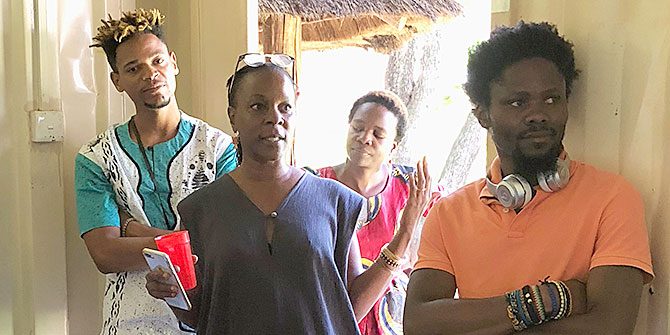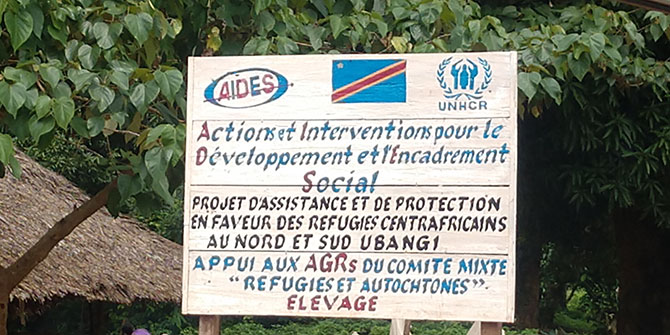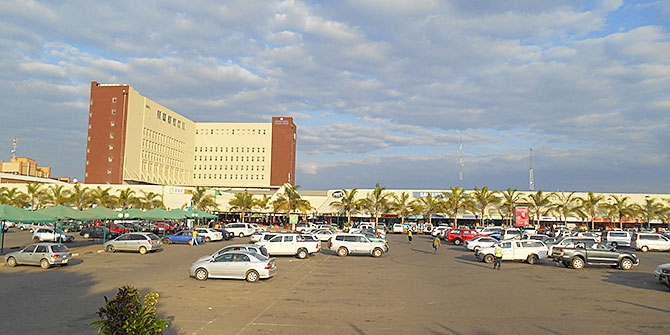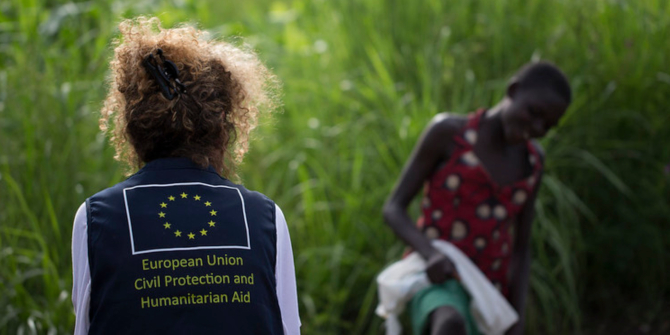Using Tanzania as a case study, LSE’s Janna Miletzki lays out the difficulties that arise by labelling refugees and migrants.
There is an ongoing debate about who should be considered a refugee. The United Nations Convention relating to the Status of Refugees of 1951 defines a refugee as a person who “owing to a well-founded fear of being persecuted […], is outside the country of his nationality and is unable or, owing to such a fear, is unwilling to avail himself of the protection of that country.” Refugees who cross an international border are protected by international agencies; while internally-displaced persons (IDPs) now also receive assistance. Scholars speak of “climate refugees” and “gender refugees” – essentially broadening the refugee label. Some scholars argue whether the categories of migrants and refugees can always be separated and maintain that refugees can also be migrants, and the other way around. Developments in Tanzania exemplify the difficulty of assigning labels to different sets of migrants and refugees.
Since the refugee label is only temporary, any such group in any place will at some point have their status redefined which, unfortunately, is often problematic and has real consequences in people’s lives – for example the requirement of repatriation or developing a dilemma over identity during a period of transition. In my PhD research, I focus on how refugees in Ulyankulu settlement in Tanzania, where I did field research in 2012, use their own agency to cope with this situation and develop a sense of belonging as they go about their everyday lives similar to other Tanzanian citizens despite the spatial and legal constraints they face – for example lacking freedom of movement and the right to vote.
Assuming their stay is only for a limited time, the refugee label only applies until repatriation. When the original reason for flight is no longer valid, a cessation clause is invoked which allows host countries to repatriate refugees. Once refugees have been repatriated, there is usually no process of allowing them to become refugees again in their former host countries – no matter how long they had lived there. For example, after the voluntary repatriation of thousands of Burundian refugees, who had lived in Tanzania for about 40 years since 1972, many of them returned to Tanzania, because of the difficulties they faced in gaining access to land or education in Burundi. These “ricochet refugees” are now treated as illegal migrants and many have been taken back to Burundi by force. This relabelling means they no longer have any rights in their former host country.
Refugee status is normally granted only if refugees agree to live in “designated areas” chosen by the government and international organisations. In Tanzania, thousands of refugees and/or migrants from Rwanda, Burundi and the DR Congo live in urban areas as well as near the Western border in Kigoma, Geita and Kagera regions without being officially recognised as either migrants or refugees. In fact, more than 20,000 “illegal migrants” living in Kagera were expelled early this month – officially because of deteriorating security in the region. In the absence of the official documentation of these migrants, several journalists and politicians in the opposition speak about “refugees”, adding to the general confusion. The President of Tanzania, Jakaya Kikwete, however, emphasises that these migrants are illegal and are not refugees. Rising tensions between Tanzania and Rwanda may have triggered the expulsion of these migrants. This started in May 2013 in a dispute over the Democratic Forces for the Liberation of Rwanda (FDLR), a Rwandese rebel group based in the DR Congo.
Both these groups of migrants/refugees faced expulsion from Tanzania due to the lack of official status or to the redefinition of the refugee label. Another set of refugees have a similar story. In 2010, Tanzania promised to naturalise more than 160,000 Burundian refugees who had lived in Tanzania since 1972. This decision was lauded by the international community as a successful example of “local integration” but in reality the process was never completed. Currently, these refugees do not have an official status as they had to denounce their Burundian citizenship when they registered for Tanzanian citizenship. Concurrently, they cannot be called Tanzanians as they have not yet received their citizenship certificates – and maybe they never will. In addition, they are no longer refugees.
In conclusion, labelling has an impact on all refugees and migrants. Some cannot prove to which category they belong and thus face eviction. Others have been refugees but lost their right to reside in the host country because of their erstwhile decision to be repatriated. The final group, discussed above, finds itself somewhere between being a refugee and a citizen in the host country. While not currently facing expulsion, they are in a dilemma and do not enjoy the same rights as other citizens. Some of these redefinitions are desired by refugees themselves, for example from refugee to citizen, but often there is a long transition period. And it is that long waiting period that can be one of the biggest challenges in the lives of refugees.







1 Comments